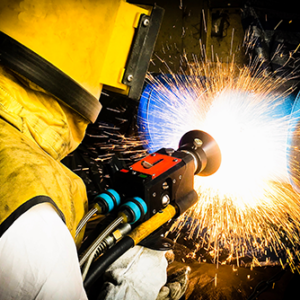Top Tips for Grinding Thermal Spray Coatings with Diamond Wheels
In the world of modern manufacturing, thermal spray coatings are critical for enhancing wear resistance, corrosion protection, and heat resistance in high-performance components. From aerospace to automotive, these coatings are applied to a wide range of substrates, including carbide, ceramics, and composites. But to achieve optimal performance, precision grinding is essential—and that's where diamond grinding wheels come in.
At Eagle Superabrasives, we specialize in high-performance superabrasive solutions designed to handle the challenges of thermal spray coating removal and finishing. Below, we share expert tips for selecting the right tools, settings, and techniques when grinding thermal sprays with diamond wheels.

1. Choose the Right Diamond Grinding Wheel Bond Type
The first step in a successful grinding process is selecting the correct bond for your diamond tools:
-
Resin bond diamond grinding wheels are ideal for fine grinding and producing excellent surface finish. Their resilience allows for smooth grinding without excessive heat buildup, making them perfect for high-temperature applications.
-
Vitrified bond diamond wheels are a great choice when rigidity and longer durability are needed. These wheels provide better grinding efficiency and are easier to true for precision work.
-
For more aggressive stock removal or coarse grinding, consider metal bond or electroplated wheels, especially when working with tungsten carbide or thick carbide coatings.
2. Optimize Wheel Speed and Grinding Parameters
High-performance grinding machines, especially CNC grinders, allow for precise control over wheel speed, grinding pressure, and grinding speed. Adjust these based on your material and coating:
-
Wheel speed should be high enough to maintain a sharp cutting edge on the abrasive grains, especially with dense coatings like HVOF coatings or oxide ceramics.
-
Lower grinding pressure helps reduce heat buildup and maintain the integrity of the workpiece.
-
For improved removal rate and better surface quality, maintain consistent grinding surface contact with minimal vibration.
3. Consider the Coating Type
Not all thermal spray coatings are the same. Some common examples include:
-
HVOF coatings: Dense, hard coatings requiring a strong resin bond diamond or vitrified bond wheel for effective material removal.
-
Plasma-sprayed oxide coatings: These are often brittle and porous, requiring a careful balance of grain size, bond type, and wheel hardness.
-
Carbide coatings: Use high-quality CBN grinding wheels for nickel-based or tungsten carbide composites to ensure long tool life and minimal porosity issues.
4. Use Superabrasives for Maximum Efficiency
Superabrasive wheels, especially those with diamond or CBN, outperform conventional silicon carbide abrasives in high-hardness coatings. Benefits include:
-
Superior thermal conductivity for heat dissipation
-
Higher durability and edge retention
-
Reduced dressing and truing requirements
-
Extended life, even under high-speed grinding conditions
5. Don’t Overlook Truing and Dressing
To maintain a clean, effective cutting surface and consistent grinding methods, regular truing is crucial—especially when grinding carbide or ceramics. Use the correct dresser for your bond type to restore form and expose fresh abrasive grains.
6. Monitor Heat and Avoid Workpiece Damage
Grinding high-velocity spray coatings can generate significant heat. Overheating may cause microcracks, corrosion, or even delamination of the coating. Use coolant generously and select wheels with good thermal conductivity properties, such as those found in moresuperhard diamond tooling solutions.
7. Match the Wheel to the Application
Whether you're performing fine grinding for cutting tool production or coarse grinding in maintenance applications, matching your diamond grinding wheel to the task is key. For example:
-
High-quality resin bond diamond wheels for surface finish on aerospace turbine parts
-
Vitrified bond wheels for precision grinding in automotive components
-
CBN wheels for hardened steels or carbide coatings on cutting tools
![]()
Conclusion
Mastering the grinding process for thermal spray coatings means understanding the interplay between coating type, grinding machine settings, and superabrasive wheel selection. Whether you're working with ceramics, tungsten carbide, or oxide coatings, Eagle Superabrasives offers the tools and expertise to maximize grinding efficiency and ensure exceptional surface quality.
Need help choosing the right wheel for your application? Contact our team of superabrasive experts today.
Subscribe to email updates
Subscribe to our blog to get the latest updates from the experts on Grinding Wheels! You can easily unsubscribe at any time




